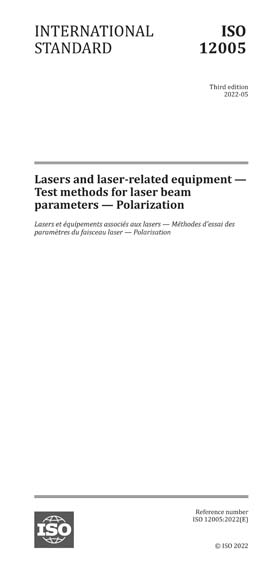Most recent
ISO 12005:2022
Lasers and laser-related equipment - Test methods for laser beam parameters - Polarization
This document specifies a method, which is a relatively quick and simple method with minimum equipment, for determining the polarization status and, whenever possible, the degree of polarization of the beam from a continuous wave (cw) laser. It can also be applied to repetitively pulsed lasers, if their electric field vector orientation does not change from pulse to pulse.
This document also specifies the method for determining the direction of the electric-field vector oscillation in the case of (completely or partially) linearly polarized laser beams. It is assumed that the laser radiation is quasimonochromatic and sufficiently stable for the purpose of the measurement. This document is applicable to radiation that has uniform polarization over its cross-sectional area.
The knowledge of the polarization status can be very important for some applications of lasers with a high divergence angle, for instance when the beam of such a laser shall be coupled with polarization dependent devices (e.g. polarization maintaining fibres). This document is applicable not only for a narrow and almost collimated laser beam but also for highly divergent beams as well as for beams with large apertures.
Content Provider
International Organization for Standardization [iso]






